- News
- Reviews
- Bikes
- Accessories
- Accessories - misc
- Computer mounts
- Bags
- Bar ends
- Bike bags & cases
- Bottle cages
- Bottles
- Cameras
- Car racks
- Child seats
- Computers
- Glasses
- GPS units
- Helmets
- Lights - front
- Lights - rear
- Lights - sets
- Locks
- Mirrors
- Mudguards
- Racks
- Pumps & CO2 inflators
- Puncture kits
- Reflectives
- Smart watches
- Stands and racks
- Trailers
- Clothing
- Components
- Bar tape & grips
- Bottom brackets
- Brake & gear cables
- Brake & STI levers
- Brake pads & spares
- Brakes
- Cassettes & freewheels
- Chains
- Chainsets & chainrings
- Derailleurs - front
- Derailleurs - rear
- Forks
- Gear levers & shifters
- Groupsets
- Handlebars & extensions
- Headsets
- Hubs
- Inner tubes
- Pedals
- Quick releases & skewers
- Saddles
- Seatposts
- Stems
- Wheels
- Tyres
- Health, fitness and nutrition
- Tools and workshop
- Miscellaneous
- Buyers Guides
- Features
- Forum
- Recommends
- Podcast
feature
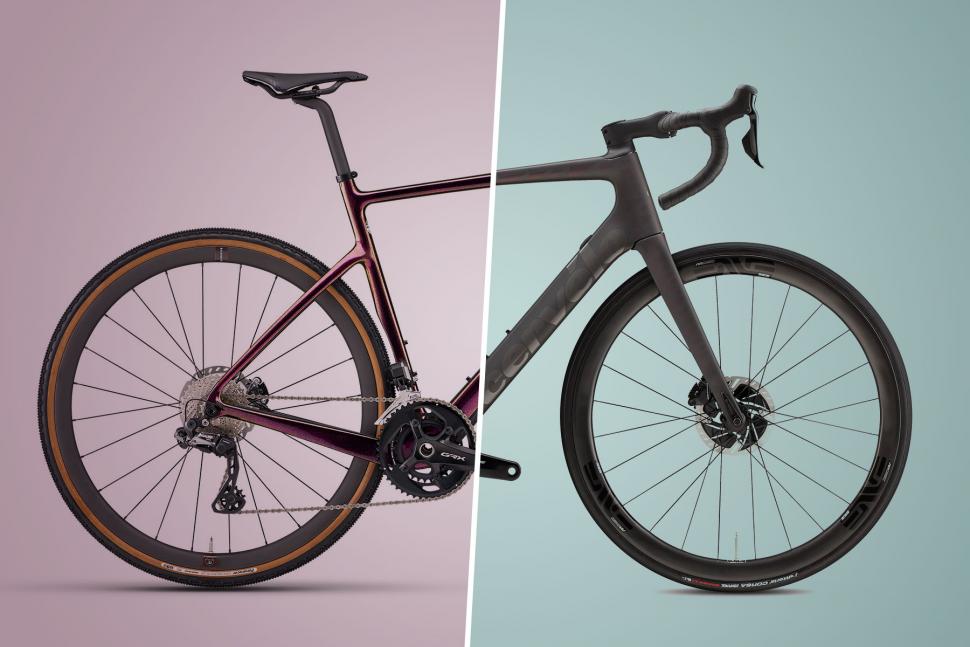 Gravel vs Road July 2022
Gravel vs Road July 2022Gravel bike vs road bike: what’s the difference and which one is best for you?
These days drop-handlebar bikes come in so many different forms – including road bikes, gravel bikes, all-road bikes – that the choice can be bewildering, so here’s our guide to the ways in which they differ and how to select the best one for you.
Not so very many years ago the vast majority of drop-bar bikes were designed for riding fast on tarmac… Okay, we've always had cyclocross and touring bikes, but road bikes have now been joined by gravel bikes, and even all-road bikes which blur the lines even more between road and gravel. These bike types are suitable for riding both on the road and on various types of off-road terrain too.
A decent road or gravel bike would most likely serve you perfectly well for weekend riding and commuting, but if you’re looking for a new bike, you might want to consider which type will suit you best. Let’s take a look at what each of these types of drop-bar bikes brings to the party, and which one would be best for your riding.
In general
Road bike (racing)
Example road bikes
To make things a little more clear cut, we’ll be using a racing road bike as our road example. Other road bikes, such as endurance road bikes and touring bikes, can be more similar to all-road bikes in some ways, and we want to create the clearest distinction between the categories.
Designed for smooth tarmac, a road bike will be stiff and lightweight. The focus here is on getting your power down on the road with minimal losses. The front end of a road race bike is low and the top tube is long, putting the rider in a tucked-down riding position.
2021 road bikes for racing often feature a highly integrated front end and aero-optimised tube shapes.
> The best road bikes for £2,000 in 2022
Race-focussed road bikes are all about speed, so if you like going fast then this could be the option for you.
Gravel bike
Example gravel bikes
- Tifosi Rostra Disc Tiagra 2022
- 2022 Lauf Seigla Weekend Warrior Wireless
- Basso Tera Gravel Apex 1x11
Sporting the most relaxed position and the largest tyres, a gravel bike is the most capable machine away from the tarmac, able to tackle technical surfaces to the point where choosing between one of these and a mountain bike becomes very difficult.
Primarily focused on performing well when the tarmac ends, gravel bikes are designed to provide a stable ride over rougher ground. The gravel market is ever-expanding and the name ‘gravel bike’ encompasses just as many niches as road bike. You don't have to ride a gravel bike on gravel!
> The best 2022 gravel bikes & adventure road bikes
Like getting away from the road? If you’re not riding over big rocks and down drops, a gravel bike might be a versatile friend.
Bonus category: the all-road bike
Example all-road bikes
Similar to endurance road bikes in many ways, an all-road bike generally offers a slightly more relaxed position than the road race bike, greater tyre clearance within the frame, and then fills that space with a set of tyres that will cope with fine, smooth gravel.
As these are designed to be ridden just as much on the road as off it, you’ll still find an all-road bike boasting plenty of stiffness around the bottom bracket, with comfort coming from the additional tyre size along with a sloping top tube and dropped seat stays which allow for a little more downward flex at the saddle.
Want to mix well-maintained gravel tracks into a road ride? This could be the one for you.
Geometry differences
The main change that will be noticeable if you switch between a gravel bike, a road bike and an all-road bike will be the geometry of the frameset. It will not only put you in a different riding position but also change how the bike rides, so this is one of the more important considerations to make when you’re choosing which to go for.
A road race bike will generally have the shortest wheelbase, the lowest front end and the steepest seat tube and head tube angles. That’s all in a bid to get you in an aerodynamic riding position and make the bike nimble for agile handling in fast bunch-riding situations.
> How to read a bike geometry table: the numbers made easy
The gravel bike, meanwhile, slackens the seat tube and head tube angles and will often (but not always) come with a longer head tube too. This aims to put you in a more relaxed riding position which has several benefits for gravel riding.
The first is that it can be more comfortable for longer rides. No one wants to get to the final part of a lovely ride, only for their back to cramp up.
Secondly, the gravel bike's geometry means your weight will be better distributed for handling on technical terrain with more of the weight placed on the rear wheel compared to the road bike.
> Bike geometry 101: Learn why frame angles & trail matter
Finally, the wheelbase – the distance between the points at which the tyres contact the ground – is often longer on a gravel bike. This is partly to help with bike stability over fast and technical terrain, but also to allow room for the larger tyres.
In the past, the bike that was designated as the capable off-roader was the cyclocross bike. A ‘cross bike is still a racer’s machine at heart and will have a tight wheelbase to help deal with the quick turns of a racecourse. On traditional cyclocross bikes, the bottom bracket will also be quite a bit higher than on a gravel bike.
Ridley’s X-Night CX bike maintains a rather traditional geometry. On the 52cm version of the bike, the bottom bracket drop is just 62mm, compared with a drop of 70mm on Ridley’s Kanzo Adventure gravel bike.
A greater bottom bracket drop lowers your centre of gravity and provides more stability, but also reduces pedal clearance.
The all-road bike splits the difference as it is designed to be nice and quick on the road, but also ready to tackle some less technical off-road sections. Canyon defines all-road bikes as “drop-bar bikes that are fast and capable on any kind of road surface from smooth asphalt all the way to light gravel tracks. They are more capable and comfortable on rougher surfaces than a typical road racing bike. This is thanks to their wider tyres and more relaxed upright riding positions.”
> Bike geometry 101: Find out why stack & reach are important
You can see from this description how nuanced the all-road category is. These can often be thought of as lightweight gravel bikes and you can certainly assign them to bike-packing duties when your kit is going to be a bit lighter than for full-on touring.
Many endurance road bikes would comfortably fit into the all-road description and Canyon is one brand that classifies its endurance road bike, the Endurace, as an all-road machine, showing it loaded up with frame and bar bags while tackling a gravel climb.
As we have mentioned above, endurance road bikes and many touring bikes are very similar to all-road bikes and would be perfectly capable of tackling the smoother gravel roads that all-road bikes are designed for.
All that said, some gravel bikes, like the 3T Exploro RaceMax, are aimed at racers, the whole gravel market having developed out of the US gravel race scene. These race-focused gravel bikes feature geometries that are far more aggressive than those of some endurance road bikes.
We hope that you’re getting an idea of how much the boundaries of each category have blurred over the past few years.
Tyre clearance
The general rule is that the more off-road the bike is designed to be, the more tyre space brands will build into their bikes. In the past, this was far more clear cut as road bikes would be running 21 or 23mm tyres and the gravel bikes of the time would have space for over 30mm.
> Trend spotting: Why you need to switch to wider tyres
Things are a little less clear now as many modern road race bikes have clearance for 32mm tyres, the thinking being that the larger space improves aerodynamics as well as allowing riders to use wider tyres which are said to roll more quickly.
You’ll often find only a small increase in the tyre clearance when you go from a road bike to an all-road bike. Take the Cervelo S5 and the Caledonia 5, for example. The S5 can take a 30mm tyre while the Caledonia fits just 4mm more.
Cervelo's Aspero gravel bike, meanwhile, takes both 700c and 650b wheels with the maximum tyre size being 42mm and 49mm respectively.
Wheels
You won’t just see visual differences in the frames, there are plenty of spec differences to consider, including wheels.
Two key differences between road wheels and off-road wheels are rim depth and inner rim width.
Rim depth is a pretty easy one to explain. The faster speeds of road bikes lead many road riders to seek out aerodynamic gains and deeper wheels of around 40-60mm are relatively common on road bikes.
> Beginner's guide to bike types - compare the big categories of bikes
As there is generally (although not always) less of an aero emphasis on all-road and gravel bikes, we usually see wheels sitting around the 30-45mm depth range. The shallower depth helps to keep the wheels nimble at speeds typically encountered while gravel riding.
Road bike wheels often top out at a 21mm inner rim width whereas all-road and gravel bike wheels are typically between 21 and 25mm to support wider tyres.
The greater inner width helps the tyre sidewall to sit straighter, allowing for better tyre feel when cornering and allowing you to run lower pressures and take full advantage of tubeless tyres.
> Should you get tubeless tyres? Are they your best option?
Brakes
While you can still buy many road bikes with rim brakes and yes, they still work just fine, you’d do well to find a 2021 all-road or gravel bike without disc brakes.
In terms of rotor size, there is very little difference between the three bike types with most running 160mm at the front and 140mm at the back. Sometimes you’ll find the weight-conscious road riders opting for the smaller 140mm size for both and some gravel bikes will go for the extra power of 160mm rotors on more challenging terrain.
Clutches
No, we’re not talking about your Ford Fiesta’s clutch here, bicycle derailleur clutches have been making an appearance on all-road and gravel bikes for a number of years now as SRAM, Shimano and Campagnolo all offer a ‘gravel’ groupset of some description.
The point of a clutch in the rear derailleur is to lessen the amount of chain slap (where the chain bounces and hits the chainstay) that can occur when riding over rough surfaces. That's not a big issue on well-maintained tarmac but a clutch is a useful feature when riding an all-road or gravel bike over rough surfaces.
Gears
While we’re down at the drivetrain it’s worth opening a can of worms by taking a look at the gearing that you’ll find on the various bikes.
Starting with a road bike, we normally find a 2X setup (two chainrings at the front) with 11 or 12 cogs at the back. The chainrings come in various combinations, but you’re likely to see a 50/34T, 52/36T or, traditionally on race bikes, a 53/39T combination.
Cassettes (the cluster of cogs at the back) are often spread between a 10-tooth, 11-tooth or 12-tooth smallest sprocket and, at the upper end, somewhere from 25-tooth up to a 36-tooth.
1X (a chainset with a single chainring) is sometimes used on the road. Vielo’s R+1 is a great example of a bike that uses it well, but 2X is more common.
> Is there a future for the front derailleur on modern road bikes?
The 2X system gives a wide spread of gears with small jumps in between each, though several combinations overlap or are repeated. You should find that this system allows you to maintain an even cadence at normal road speeds of between 10-35mph, but the steepest climbs might leave you grinding away in your smallest gear as you struggle to push the pedals around.
Moving to the all-road bike is where the picture becomes a little neat and tidy. Both 2X and 1X systems are found on all-road bikes. 1X systems are simpler and they are also better at shedding mud when you really go off-piste.
Gravel bikes too are a mixed bag of 1X and 2X systems, but you’re more likely to find a 1X system on a gravel bike as the intended use of the bike is more focused on non-tarmac riding.
Rather than spending several thousand words here arguing the case for each, we’ve done that in this article where we also sought your opinions.
Frame mounts
You’ll usually find the standard mounts for two bottle cages on a road bike. An all-road bike will often stick to the same cage mounts, but you might find a third pair tucked under the bottom bracket and maybe a top tube mount point behind the stem where you can bolt a bag to store all of your favourite snacks.
As you step up to a gravel bike, the number of mounts is seemingly endless with, in some cases, even the fork legs and crown being drilled for load-carrying duties.
One thing that all three bike types can have in common is mudguard mounts, especially on models are aimed at a UK market.
Picking a bike
Is a road bike, an all-road bike or a gravel bike the best option for you? With their ability to take wider tyres than ever before, you can take modern road bikes onto some smoother gravel roads and we’ve ridden many gravel bikes that, with slick tyres fitted, are perfectly fast enough for use on the road.
> How to buy a bike: 9 steps to finding your best new ride
As a result of these blurred lines, it can be tricky to choose between the bikes and it may well come down to which bike has a combination of fit and components that suit you and your riding the best.
If you're interested in riding only on tarmac, confine your search to road bikes. If you're going to take on rougher surfaces you will benefit from having the extra tyre clearance and lower gearing that all-road and gravel bikes provide. Similarly, as you look to carry more bottles and luggage, the increase in mounting points on a gravel bike will help out a lot. With all this in mind, the best advice is to spend some time thinking carefully about the terrain that you’re realistically going to ride before spending your money.
Latest Comments
- kingleo 38 sec ago
How would numberplates on cycles stop dangerous pedestrians who cause accidents by walking out onto the road without first looking carefully to...
- john_smith 12 min 51 sec ago
And don't forget the speed limits.
- Clem Fandango 1 hour 13 min ago
No. Not it doesn't https://anthonyjones.com/single-vehicle-accident-liability/
- chrisonabike 1 hour 23 min ago
The times I was visiting hospitals in Edinburgh a common sight was a group just outside the hospital doors, smoking in the cold, with one or more...
- wtjs 1 hour 45 min ago
the UK's head of roads policing has spoken at-length about the need for stricter sentences to deter dangerous and anti-social driving...
- David W 5 hours 10 min ago
WELFARE CLAIMING LYCRA LOUT ON DELIBERATE 'GO SLOW'...
- Boopop 6 hours 15 min ago
Decathlon are great. My 2012 Triban 3 is still going, rode it in the sun today following a wireless electronic groupset upgrade
- Andrewbanshee 11 hours 28 min ago
A bit of mental gymnastics here https://www.eveningnews24.co.uk/news/24325747.betters-laws-cycling-stop-...
- lonpfrb 11 hours 43 min ago
Huge conflict conflict missed opportunity:...
- roadeo_123 12 hours 51 min ago
Exactly this. But you need to be fiurther. If my wheels are 50 cm from the kerb then 2m from the kerb is 1.5m from my wheels, which cannot be 1.5m...


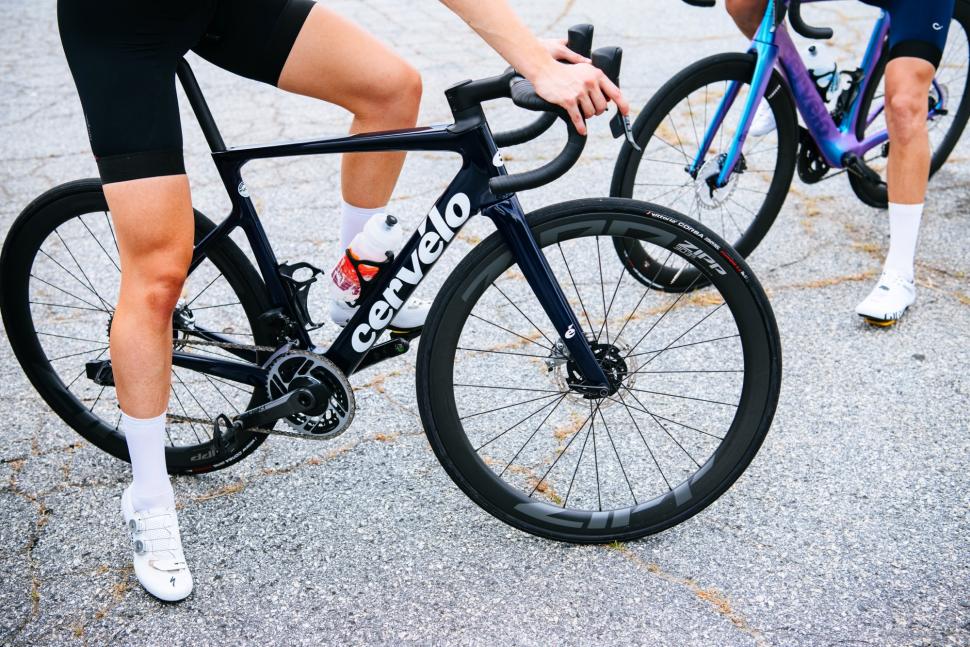
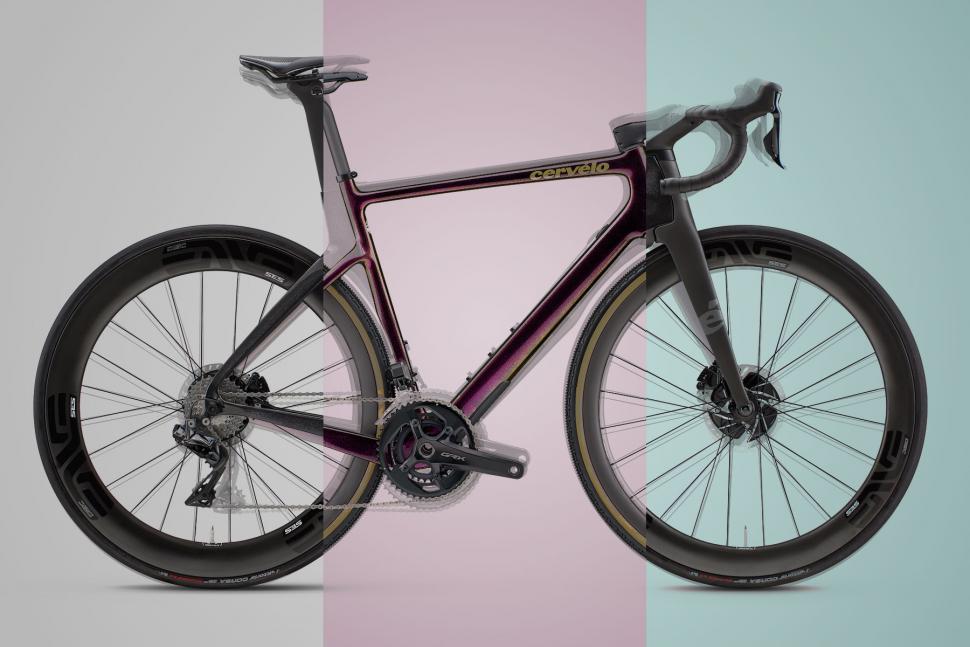

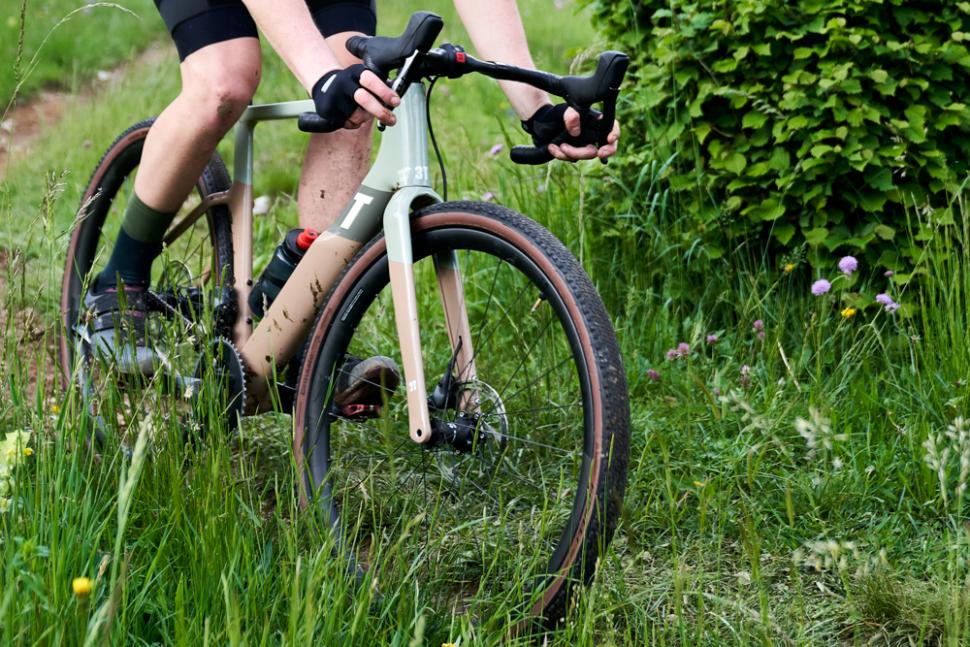

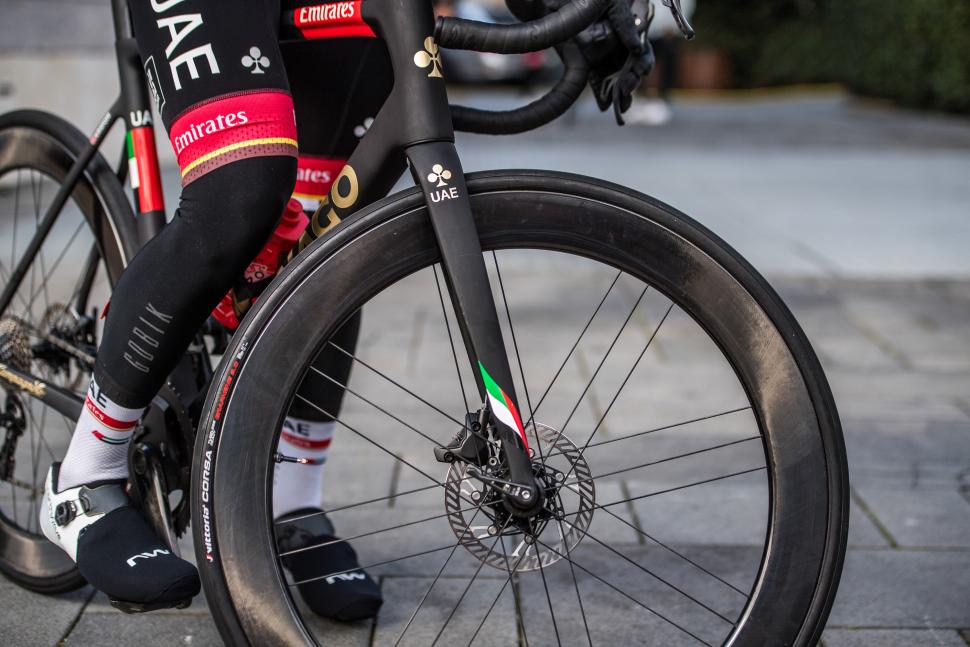


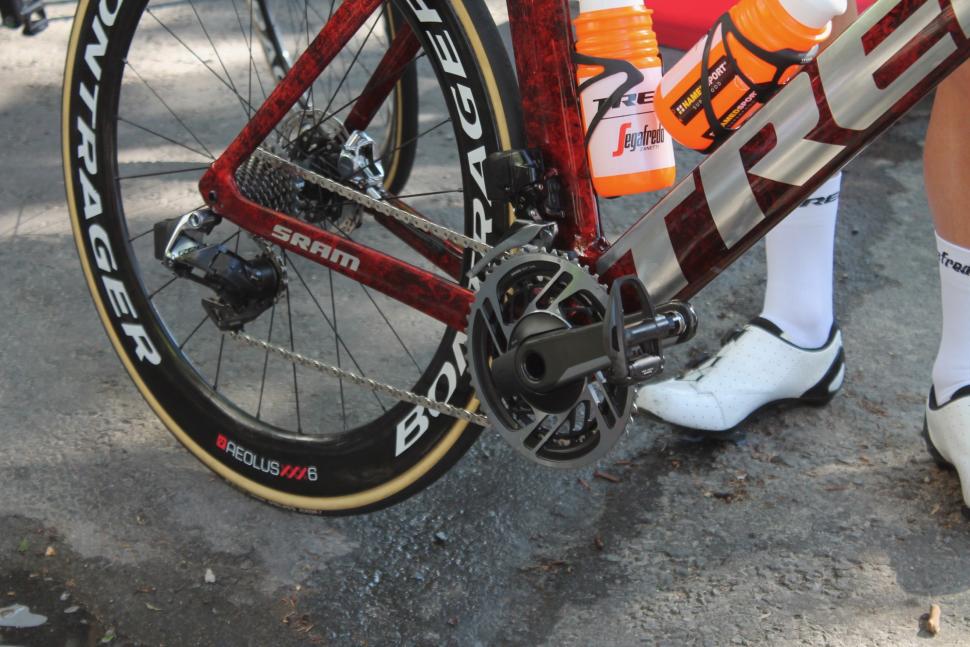


Add new comment
2 comments
So the term allroad-bike has been totally misappropriated by the marketing departments.
It does absolutely NOT design a road bike with a little wider tires capable of going on "smooth" gravel! It is a bike with a road frame, geometry and drivetrain that can fit tires of at least 42mm and up to 54mm with mudguards, and 58 or thereabouts without, and thus capable of going on very rough (!) gravel and even easy single trail.
https://www.renehersecycles.com/why-we-call-it-a-revolution/
is all-road to me.